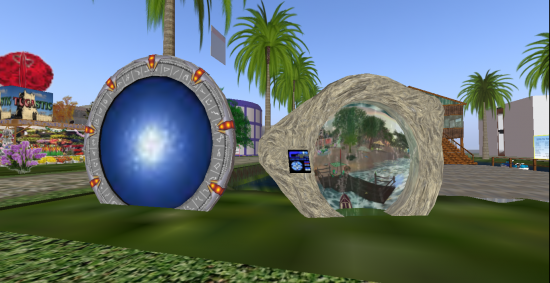Hypergrid inventor Crista Lopes, professor of informatics at the University of California, Irvine called today on big public grids to begin a mass migration to lower regions.
The reason is that Second Life-compatible viewers don’t handle jumps of more than 4,096 regions in any direction — causing problems both for grids where regions are located very far apart from one another, and for hypergrid travelers trying to teleport from grids located in the lower regions to grids centered in the upper reaches.
ReactionGrid, Jokaydia Grid, and GovGrid are among the grids centered around the 1,000-1,000 mark — but they are in the minority.
Most grids put their regions near the 10,000-10,000 coordinate, including the largest grid, OSGrid. When new grids are launched, they are usually located within teleport distance of OSGrid for the convenience of their residents.

The 4,096 bug has been known for three years, and is an issue with the viewer software, Lopes said, and is not specifically an OpenSim problem — though it affects OpenSim users most of all.
“It’s a fundamental design decision of Second Life,” she explained in her post. “Second Life assumes that a grid will never be larger than 4,096 by 4,096 regions. That design decision is reflected pervasively in the viewer code to the point that very smart developers don’t think it’s worth the trouble changing it.”
And it doesn’t just affect teleports, she added. The 4,096 bug also keeps maps from loading correctly when regions are located above 4,096-4,096. Instead of the entire map loading at once, small block of regions show up instead. Clicking on empty spots on the map causes more regions to show up. The only way to fix it is to move grids to lower locations.
There’s plenty of room in the lower coordinates for any grid, she added. A grid that filled up every region on a 4,096 by 4,096 map would have more than 16 million regions.
And, while two regions on the same grid can’t share coordinates, there’s no problem with different grids having overlapping regions — the coordinates are used to allocate space on a map, and each grid has its own map.
Lopes said that she’s come to terms with living with the 4,096-region teleportation limit, and all future Diva Distro grids will, by default, be placed somewhere within this set of coordinates.
“I hope the OSGrid administrators will also come to terms on this, and force the coordinate change, so that we can finally have an open metaverse free of hiccups,” she said.

OSGrid president Michael Emory Cerquoni (also known as “Nebadon Izumi†on OSGrid) responded to her post with doubts.
“I honestly just do not see it happening,” he said.
OSGrid, a non-profit run by volunteers, currently has around 6,000 regions managed by hundreds of different individuals, groups, and hosting companies. Whereas some grids host all their own regions, and manage everything centrally, OSGrid allows anyone to connect to the grid, using any free coordinate.
Coordinating such a move would be a “disaster,” he said, and cause a great deal of stress for the grid’s volunteer managers. It also doesn’t help that OSGrid already has some regions located in the lower coordinates, so upper regions couldn’t simply be shifted down.
“It just seems crazy that there is nothing we could do on the simulator side to overcome this problem,” he added.
- OSgrid wiping its database on March 21: You have five weeks to save your stuff - February 15, 2025
- OpenSim activity up with the new year - January 15, 2025
- OpenSim land area, active users up for the holidays - December 15, 2024
